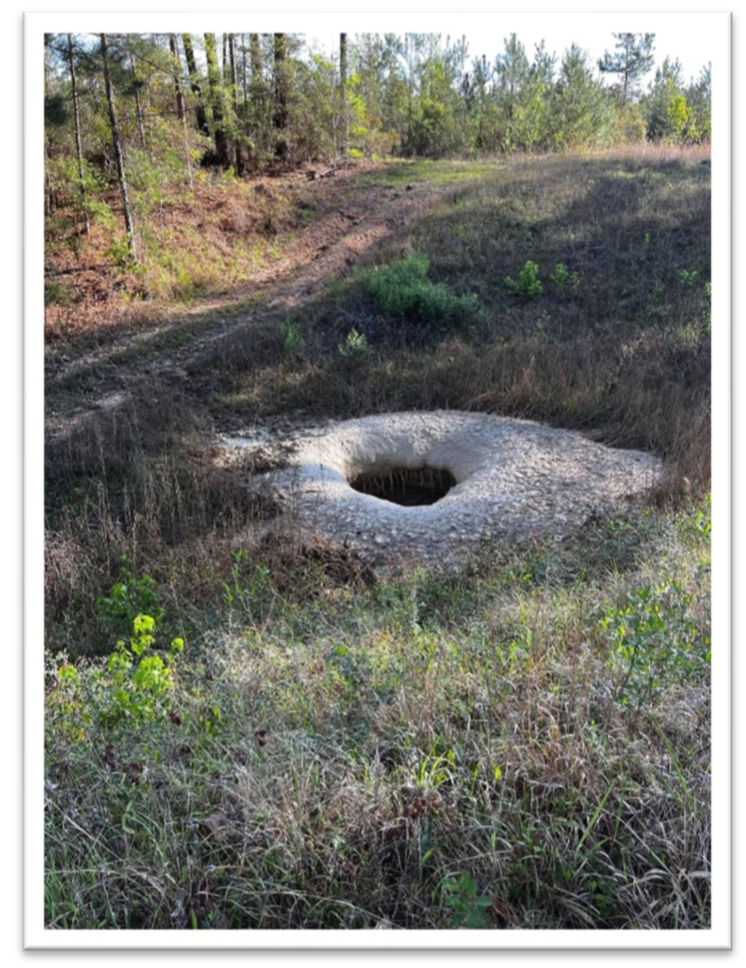 Back in the Spring, personnel were preparing to conduct a prescribed burn in Polk county. The burn boss along with an operator were doing some final prep work to ensure that the containment lines were adequate and the site was ready for the burn.
Back in the Spring, personnel were preparing to conduct a prescribed burn in Polk county. The burn boss along with an operator were doing some final prep work to ensure that the containment lines were adequate and the site was ready for the burn.
Picture taken by Burn Boss from Rapid Lessons Shared Report
The operator was refreshing a containment line along the edge of a pipeline right-a-way on the north side of the burn. He noticed a large hole in the ground, surrounded by dirt, in the area where the right-of-way dipped into a low drainage. He stopped short of the hole and called the burn boss for further inspection. As the burn boss approached, he could hear the sound of water rushing. This was caused by water in the hole from the previous rainfall and gas leaking from the pipeline. Once identified, the two safety cleared the scene and called the emergency pipeline number. The line that ruptured was identified as a 12-inch diameter natural gas pipeline that was approximately 10 feet deep at the point of rupture. The cause of the rupture was unknown.
Some lessons to take away from this.
“Be more observant, especially around pipelines” – Operator. Make sure to always keep your guard up when working around pipeline areas, it is easy to get complacent.
“It wouldn’t be a bad idea to come check pipelines before burns or even prep work.” – Burn Boss. It would be worthwhile to double check the pipelines in the area even if they are outside of the boundaries of the burn. It is also beneficial to refresh lines and check the burn unit in the days prior to the burn.
No matter when or where you are doing a prescribed burn, always have your guard up and follow your training.
For more information on this incident, be sure to check out the full report here.
Texas A&M Forest Service. Rapid Lessons Shared.